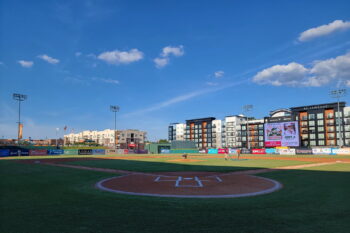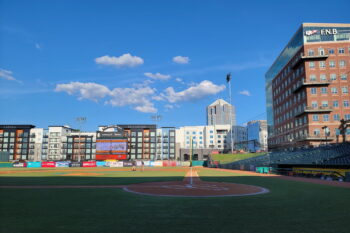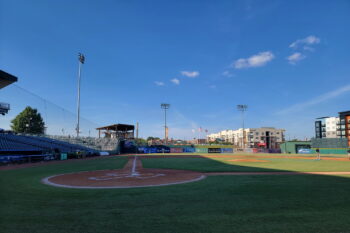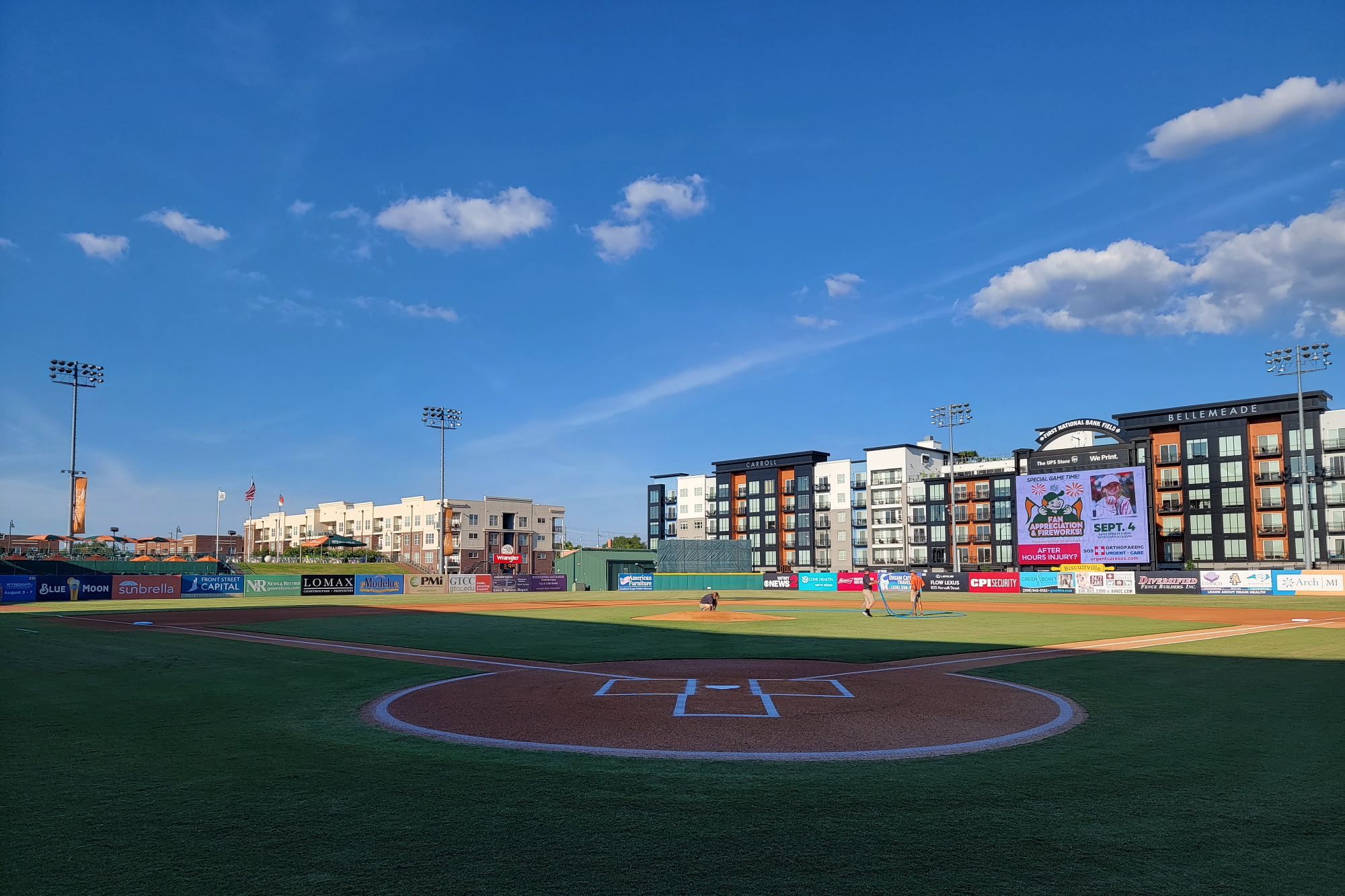GREENSBORO, NC – First National Bank Field has been revealed as a hitter-friendly park.
The numbers over the last two seasons have shown some extreme splits between the home and road numbers for both Greensboro hitters and Greensboro pitchers. The best players tend to do well at both parks, but still crush the ball in Greensboro.
This season saw promotions to Altoona for Henry Davis, Matt Gorski, and Endy Rodriguez. All three put up an OPS over 1.000 at home. All three were in the .783-.851 OPS range on the road. Gorski and Rodriguez are already in Indianapolis, while Davis missed a lot of development time this year with injuries. Even with lower road numbers, the offense for these guys isn’t in doubt.
It’s a bit different for guys like Dariel Lopez or Eli Wilson. Both have been solid at home this year (.915 and .848 OPS, respectively), and both have struggled on the road (.915 vs .692 for Lopez, .848 vs .548 for Wilson). As such, you have to lean into scouting reports to make sure it’s not just the home park.
For some players, like Abrahan Gutierrez, there is no difference in the parks. Gutierrez had a .762 OPS this year at home, and a .772 OPS on the road. He also showed a great ability to turn on a pitch when I saw him, and seems like a guy who can hit anywhere when everything clicks.
So, what makes this park so hitter friendly? Let’s take a look.
First National Bank Field

Earlier this month I got my first extended look at how this park plays, as well as what makes it so hitter friendly. I’ll first point out that there’s an extreme shadow in the photo above, which carries into the game. By the start of the 6:30 PM games, the shadow had covered the entire infield, but the outfield was bright. I don’t know how much this might impact hitters.
The outfield walls are shallow at the corners, and don’t have much of an arch around the field. They almost meet at a point, making center field deep, but nothing else as deep.
Right Field

There’s a hotel and apartments behind the right field wall, along with a street that runs right behind the wall. As such, this wall starts at 327 in the corner, and extends straight over to center field, but without much depth.
In PNC Park, for example, the right field wall extends straight across, but also back to a deeper part of the park in right-center. Thus, it’s 320 on one side of the Clemente Wall, but 375 on the other. The Greensboro walls don’t extend that deep. It’s more like drawing a line from the right-field corner of PNC to center field, which cuts off a lot of the outfield ground in fair territory. Any hit off the Clemente wall would likely be a home run in Greensboro.
Talking with right-handed pitcher Nick Garcia about the field, he said that anything in the air from the scoreboard over to the right field foul line always feels like it has a chance to go out.
Left Field

It’s only 317 down the left field line. Once again, the walls extend straight across to center field.
The result of both walls lacking any kind of arch explains something that Matt Gorski told me earlier this year: This outfield has no gaps. Everything here is either a single or a home run. That’s obviously not literal, but when you cut out the deep gaps of the outfield on both sides, you reduce extra base hits.
One specific issue with left field is that the wind blows out to left early in the year. There is a First National Bank building next to the park, and a space between that building and the two-deck park that I’d imagine would create a wind tunnel, if the wind is blowing that direction.
Reacting to the Field
I asked Greensboro hitting coach Ruben Gotay if this field might lead to hitters getting off their approach.
“As a hitter, you see a ballparks not as big and you’re trying to yank the ball and hit it out,” said Gotay.
He added that they teach the players is to just focus on having a short, quick stroke and a gap-to-gap approach that can work on every field.
Nick Garcia has been one of the best pitchers in Greensboro this year. He had a 3.92 ERA in 62 innings at home, compared to a 3.35 ERA in 51 innings on the road. He discussed how he approaches the home park.
“I’m going to attack with my game plan and if the ball gets out of the yard, it gets out of the yard here,” said Garcia. “The goal is just to go out there and throw up zeros. That includes keeping the ball in the yard.”
Garcia gave up 11 homers at home, compared to four on the road. Even when impacted by the home park, he was able to put up solid numbers.
In the long run, the Greensboro park factors don’t matter. The best hitters will hit on the road. The best pitchers will be able to limit damage at the hitter friendly home park.
Just keep the park factors in mind when a struggling hitter is heating up at home, or when a good pitching prospect gives up several homers to left field in April next year.
THIS WEEK ON PIRATES PROSPECTS
David Bednar Graduates From Youth to Leader
What Makes Greensboro So Hitter Friendly?
Ricky DeVito is a Sleeper to Follow in the Pirates System
Anthony Solometo: Lefty Showed Great Approach In First Professional Season
Jared Oliva Shows Off His Hustle With an Inside the Park Homer


